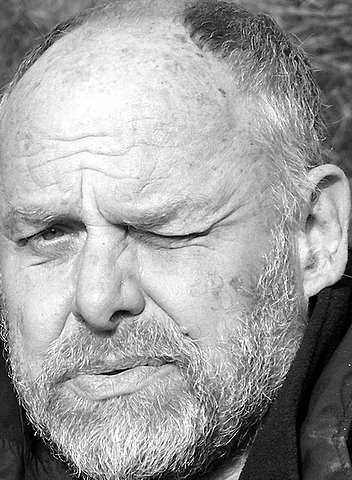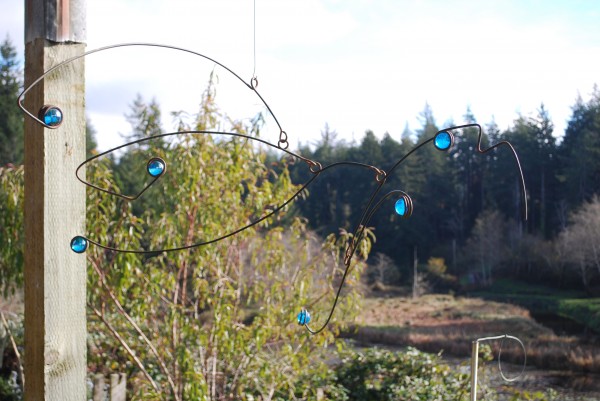
16 Nov Outlaw Reflections: Silverhawk Cowboss
This one from Oleh Lysiak is all about dying tradition and the rugged individualism that ties some folks to the land tight as a roped calf. That image, if photoshopped on one of today’s reality of land for sale (and not for man and beast) might look wrong, anachronistic, but it’s right. At least for some.
He reveres and romances the past, lives and works in the present and expresses concern for an uncertain future for the working cowboy tradition.
Dan Moyer is cow boss of the Silverhawk Ranch in Nucla, Colorado. He’s responsible for the day-to-day operation of a working cattle ranch.
Moyer comes from homesteader stock, grew up in the Rifle/Meeker area and has been around cattle and cowboys most of his life. He also worked as a “connector,” building skyscrapers all over the United States and South Africa, working in the air connecting girders. He’s an outfitter of considerable renown, Colorado State 1,000-yard shooting champion, a horse trainer and trader, and craftsman of traditional cowboy horse bits.
Tradition plays a large part in Moyer’s life. He has put considerable effort into researching and documenting his family history.
Dan’s great-great grandfather was from Indiana, killed in the Civil War. His great-great grandmother married a Dunkard preacher. Moyer’s great-grandfather, who was 16 at the time, couldn’t stand the preacher and ran off to St. Louis, Missouri, where he went to work for a rancher.
The rancher also had a freighting business and took Dan’s great-grandpa under his wing. He found the boy was good with horses, gentle, had a way with them. Moyer’s great-grandpa learned the freighting business and became a teamster.
The rancher bought a bunch of cattle in Old Mexico but unfortunately they had hoof and mouth disease. He didn’t know that. When he drove the cattle up they spread the disease to all his neighbors. He wound up having to destroy all his cows, pay reparations to his neighbors. The rancher knew it was going to break him, knew he couldn’t do much for great-grandpa but gave him a team of his choice and a freighter wagon.
Great-grandpa left and wound up in Leadville, Colorado, during the silver boom. He knew Wild Bill Hickock, who was also a freighter, but didn’t like him.
Great-grandpa married a woman named Harmon and after the silver boom they went to Antlers, Colorado, and kept on freighting. Antlers was a stage stop between Rifle and Silt. At that time Rifle had one of the largest stockyards in the country. Dan Moyer played in that stockyard as a kid.
The grandfather’s two older sisters, Nellie and Carrie, raised him because his dad was always on the road, like a long haul trucker is today. An old mountain man named Oscar Dudley, who knew Jim Bridger, taught Dan’s grandpa how to trap and shoot. Moyer’s family still has the rifle that the town of Rifle was named after. Oscar Dudley gave that rifle to Dan’s grandfather.
By the time Dan was fifteen he was making a living on his own, cowboying, working on a ranch for an old woman who had outlived her husband by 20 years. Everything on the ranch was done the traditional way, no modern equipment, using teams to feed.
Dan and his dad weren’t getting along at the time and that’s how Dan got to go to work for the old woman. Dan’s older brother Tom, who was 18, got into the ironworkers apprenticeship program, was making a lot of money, driving a brand-new pickup. Dan was working as a cowboy making dirt wages.
Dan gave up cowboying and went into the apprenticeship program for three years. He became a connector, liked to work in the air, built up a reputation and worked connecting all the highest buildings in Denver.
In 1983 he was one of seven ironworkers picked to go to Johannesburg, South Africa. Dan worked in New York, New Jersey, Los Angeles, Alaska, Louisiana. He worked connecting the power plant in Nucla.
For 13 years Dan cowboyed part of the year and worked iron the remainder. When his daughters were old enough to start school, Dan realized he’d have to find a place, which would be a good home for them. He wanted his kids to be able to stay in school, in one spot, and not get bounced around.
Moyer came to Nucla, liked it and decided he could slowly but surely work his way back into full-time cowboying. It was hard because he wasn’t from the area, nobody knew him. He’s worked on the Silverhawk Ranch for five different owners. After three years he made cow boss. Dan claims he’s still learning and gives credit to cowboys better than he. He learns from them and takes pride in that.
Anything having to do with cows is Dan’s decision. In a sense, all the other cowboys work for him. He’s the foreman but is called the cow boss. Different places he’d be called a jigger boss. His butt is on the line because when there’s a decision to be – it’s his decision.
Dan breaks and trains his own horses and occasionally sells them. He works with his family to make a living any way they can. In many ways they’re better off than when he was an ironworker – life here is steady and they are fortunate to buy a place and accumulate stuff. Dan reiterates that all he ever wanted to be is a cowboy.
Some of the greatest cowboys Dan worked with tried truck driving, mining or heavy equipment operating at some point in their lives. A real cowboy may have to do other things to make ends meet, according to Dan, but always goes back to cowboying because it’s his first love.
Dan loves his job, has a great boss. When he’s out on his horse working cattle on a cold morning, Dan appreciates being able to be there. He laments the fact there’s fewer ranches in the West each year.
“Look at the American cowboy, these ranchers — you talk about tradition — we’ve got it here right now. If we’re not careful we’ll let it slip away. Every time you turn around there’s a big ranch selling out, turning into a housing development. In my opinion our country is poorer because of it. Now you’ve got a housing development and you’ll never bring back that tradition. It is gone and it will never be back,” Moyer states emphatically. “I’m going to stick with it as long as I can.
“What it amounts to is today’s land prices are so high that a person can make way more money by selling his land. You can’t make as much money with cattle as you can with real estate. I’ve got a friend in Snowmass with one of the last remaining working ranches who can’t make a living because taxes and costs are so high, but if he sells the land it’s worth $8 million. It’ll sell and it’ll be gone, not just the ranch, but an entire way of life, the traditions, the culture,” Moyer says sadly.
Land costs, development, federal and environmental attempts to raise grazing fees on public lands all contribute to destroying traditions and a way of life that embodies the heart of western culture.
“It’s like the end of the movie ‘Monty Walsh,’ where the ranch has been sold and everybody scatters, and this guy asks this cowboy what he’s going to do and the cowboy says: ‘As long as there’s one cowboy left to punch one cow — it ain’t over,’ and that exactly how I feel,” says Dan Moyer, cow boss.
Editor’s note about Oleh:
I am reminded of the man every day. A talented sculptor, one of his mobiles sits on the coffee table in our living room. But I had not seen or heard from Oleh Lysiak for over 20 years. Ah, the wonders of social media. We rediscovered each other a few months ago, which was when I also discovered the artist is also a writer – at least nowadays – though making marks on paper is only one among a very long list of talents, some slightly sketchy.
O.Z. Lysiak has from time to time worked as a reporter, editor, columnist, photographer, public affairs officer, restaurateur, festival booth owner-operator, ski technician, carpenter, sailor, smuggler, tree planter, fishing guide, truck driver, river guide, cook, wood-cutter, trash collector, marine gravity operator, reclaimed wood broker and sculptor. He has written for The Ukrainian Weekly, The Oregonian, and closer to home, The Aspen Daily News, The Aspen Times, The Crested Butte Pilot, The San Miguel Basin Forum – and The Telluride Daily Planet. Oleh’s poetry has been widely published and his is author of several books, including “Neighborhood of Strangers”; “Art, Crime & Lithium”; “Scars In Progress”; “Geezer Rumba.”
Given his street cred and the fact he wrote extensively locally in the bad old days, I asked Oleh if he would mine his files for past columns that might be of interest to our readers. I am thankful the man said “yes.”





Sorry, the comment form is closed at this time.